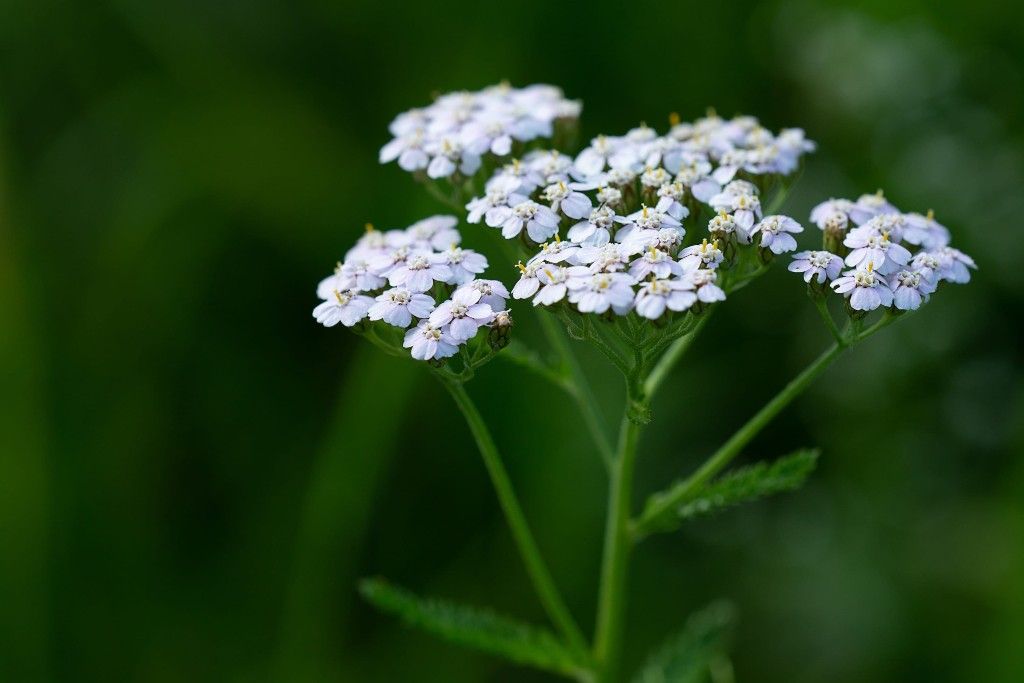The botanical name for yarrow is Achillea millefolium. The wild yarrow, or common yarrow as it was called by Gerard who discovered it by the side of wayside paths, was used medicinally before 1440. If you had tooth ache in those days, you chewed some of its green leaves. And it was used to treat wounds, hence the common name “soldier’s woundwart.”
Actually, the plant was named for Achilles who used it to staunch his soldiers’ wounds. The common name “yarrow” is Anglo Saxon, and another name, “milfoil,” is the Norman/French word for “finely cut leaves.” The leaves are ferny in texture. They were dried and used as a substitute for snuff and the young shoots were eaten in salads.
Foreign varieties of yarrow were introduced to England from the Caucasus in 1804. Because they spread too quickly for most home gardeners today, the common white yarrows are not so much in vogue, but some newer versions have been developed. Use them in difficult spots in your garden as they are long blooming, heat tolerant, drought friendly, and they spread to discourage weeds.
“Firefly Summer” has lasting yellow flowers all summer. Grow it in a dry sidewalk plot together with blue salvias. This combination is carefree, deer free, drought tolerant and very attractive. You’ll impress the neighbors!
This is Moya Andrews, and today we focused on Achillea.










